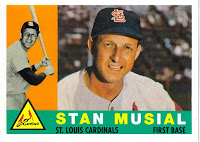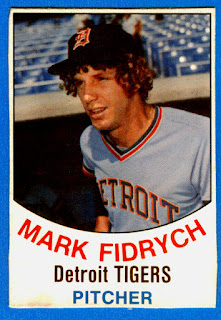Here is my Hall of Fame ballot for the 2013 induction. A voter is required to select up to ten players and can select none if chooses to do so. According to the Baseball Hall of Fame, the requirements are detailed in this link:
http://baseballhall.org/hall-famers/rules-election/bbwaa . So, here is my ballot:
In:
Craig Biggio:. In addition to his 3,000 hits, he is 5th all time in doubles and made all star teams seven times and won seven silver sluggers. While moving from catcher to 2nd base and then to centerfield.
Curt Schilling: 216-146 record. 3,116 strikeouts and 3.46 ERA. He owns the highest strikeout to walk ratio in history(3,116Ks-711BBs) and his considered one of the best post season pitchers ever. Won 3 World Series titles(2 with Red Sox and 1 with Arizona) and won the 1993 NLCS MVP with pennant winning Phillies.
Jack Morris: He is the anti-stat guy. If elected he would have one of the highest ERAs(3.90) in Cooperstown. He never reached 300 career wins(254) nor 3,000 strikeouts(2,478) which are usually hall of fame guidelines. He did however lead 3 franchises (1984 Tigers, 1991 Twins and 1992 Blue Jays) to World Series crowns. He is all-time leader in AL in all the major statistical categories for pitchers during the decade of the 1980s. So if a players is considered the best at his position in the league for a decade. Isn't that what the Hall of Fame is all about?
Tim Raines: He was the Rickey Henderson of the National League during the 1980s. Because of this comparison, Raines is widely overlooked. He, however, has a higher batting average than Henderson and is the all time leader in stolen base made percentage. If you compare him with Hall of Famer Lou Brock. Brock has the 3,000 hits and Raines doesn't mostly because Brock was more of a free swinger. If you include walks, Raines has more combined career hits and walks than Brock. Raines fell off stat wise pretty quickly late in his career. Was it because of playing on astroturf for so long? or did the steroids era go in affect and Raines skills became less useful? Who knows, but if he didn't play at the same time as the greatest leadoff man(Henderson) did, he wouldn't probably be in by now.
Alan Trammell: 6 time All-Star. 4 time Gold Glove winner. 3 time Silver Slugger winner. but no MVP. If he had won the MVP in 1987(he finished 2nd to Toronto's George Bell despite leading the Tigers to 1st place finish over the Jays), he would be labeled as "MVP Alan Trammell" and be considered more of a candidate to others ala Barry Larkin. In addition, Trammell was one the first power hitting shortstops in the majors which as since become common and also teamed with 2nd baseman Lou Whitaker to become the longest double play tandem in major league history. If Tinkers to Evers to Chance is in, Tramm and Sweet Lou should be also.
Fred McGriff( .284 avg 493 HR 1,550)5 time all star and 3 time Silver Slugger winner. If McGriff had hit just seven more HRs, he would be considered a lock for the Hall of Fame. I think close enough works well here. He posted ten 30 home run seasons and eight 100-RBI seasons, yet never had that monster season to hang his hat on. He was a very consistent hitter for a long time while competing in the steroid era. Braves catching fire after acquiring McGriff in 1993 and becoming division champs helps his case also.
Almost in(but not):
Dale Murphy, Edgar Martinez and Larry Walker. If the Hall of Fame is the "hall of very good", these guy would be automatic. But, I don't think their numbers quite reach Hall of Fame standards. Murphy was a 2time MVP and perennial all star in the 1980s, but wasn't great long enough. Martinez is considered the greatest designated hitter ever. but I find it hard to vote for a guy who rarely takes the field. Walker was very good player, but how much was his numbers aided by playing in Coors Field. If any of these guys make the hall, it wouldn't bother me much. There are already lesser players inducted in from my viewpoint.
Wait and see:
Mike Piazza and Jeff Bagwell. These two sluggers had hall of fame careers but are under the cloud of suspicion of performance enhancing drugs. Even though they were never named or found guilty of any wrongdoings. I am going to take the wait and see approach to see if anything surfaces with Bagwell and Piazza. Their silence speaks volumes for me. If they were clean players, wouldn't you think they would deny all allegations when asked, yet they say nothing. I have confidence that they would receive enough votes to stay on the ballot and can be voted in later.
steroids maybes: Roger Clemens and Barry Bonds. These 2 greats were implicated with steroids by others but still deny usage. Many people believe they both had hall of fame careers before they allegedly started using PEDs. So if they eventually get in, I think I am ok with it. But right now would not get my vote.
Steroids definite nos: Mark McGwire, Sammy Sosa and Rafael Palmiero. These alleged PED users had great stats, but I believe their hall candidacy is based only by these skewed numbers. They were not the all around players of Clemens or Bonds. If these three never used PEDs, they would not even be considered for induction.
There is where my voting lies. Who I think I will actually get in? If I was a betting man, I would guess Biggio and Schilling would get in. Morris would likely just get enough of the votes since he was so close last year. It would not shock me if no one gets voted in. Every voter has their own distinct view of each player. It could be possible where all the votes are spread out so far, no player would reach the 75% needed to be elected in. We would all find out next week and end the discussion for another year.
















